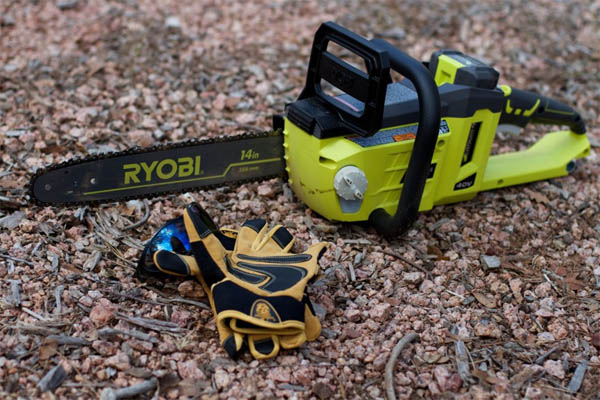Corded vs. Cordless Electric Saws: Making the Right Choice for Your DIY Needs
The differences between corded and cordless electric saws are: Corded saws provide continuous power for heavy-duty tasks but are less portable, while cordless saws offer mobility but have limited battery-powered runtime and less power for demanding cutting jobs.
When it comes to tackling cutting tasks, the choice between corded and cordless electric saws often marks a critical decision for DIY enthusiasts.
Each type of saw brings its own set of advantages and limitations to the table.
Corded saws offer unrelenting power, making them ideal for heavy-duty projects that demand consistent performance.
On the other hand, cordless saws provide unparalleled mobility, allowing users to cut the cord and work in remote locations or confined spaces with ease.
In this exploration, we’ll delve into the differences between corded and cordless electric saws, helping you make an informed choice that aligns perfectly with your cutting needs and preferences.
Advantages of Corded Electric Saws
1.) More Power and Reliability
One of the standout advantages of corded electric saws is their consistent power output. These saws are directly connected to an electrical source, providing a steady stream of electricity.
This reliability ensures that your tool operates at maximum efficiency throughout your project.
For tasks demanding sustained cutting power, such as working with dense hardwood or thick metal, corded saws are the top choice.
2.) No Need to Recharge Batteries
Unlike their cordless counterparts, corded saws do not rely on rechargeable batteries.
This means you won’t have to interrupt your work to recharge batteries, making corded saws ideal for long projects that require continuous operation.
You can work as long as you have a power source.
3.) Better for Demanding Tasks
Corded electric saws offer higher torque and cutting capacity, making them the go-to choice for professionals and hobbyists tackling challenging materials.
Whether you’re cutting through hardwood, metal, or other tough materials, corded saws provide the power and performance needed to get the job done efficiently.
4.) Lighter in Weight
Corded saws tend to be lighter than cordless models. This is because they don’t need to house heavy batteries.
The reduced weight can significantly reduce user fatigue during extended periods of use, enhancing overall comfort and control.
5.) Less Expensive than Cordless Saws
Corded electric saws are generally more affordable upfront because they lack the expensive battery technology found in cordless models.
If cost is a significant consideration, corded saws offer a budget-friendly solution without compromising on performance.
Disadvantages of Corded Electric Saws
1.) Require an Electric Source
The primary drawback of corded saws is their dependency on a nearby power source. You’ll need access to electrical outlets, which can limit their use in outdoor or remote locations.
When working in locations without readily available power sources, such as construction sites or the great outdoors, corded saws can be inconvenient or impractical.
2.) Less Mobility and Convenience
The cord restricts your movement and range, making corded saws less convenient for tasks that require you to move around a lot or work in tight spaces.
Maneuvering the cord can be cumbersome and may require the use of extension cords, which can further limit mobility.
3.) Not Suitable for Outdoor Use without Power
When working outdoors where there’s no access to an electrical source, corded saws become impractical.
This limitation can be a significant drawback for professionals who often work in outdoor environments.
Advantages of Cordless Electric Saws
1.) More Mobility and Convenience
Cordless electric saws offer the freedom to move around without being tethered to a cord.
This mobility is advantageous for projects that require you to work in different locations or for tasks that involve cutting at various angles.
Whether you’re working in a large workshop or a confined space, cordless saws provide unmatched flexibility.
2.) Suitable for Outdoor Use
Cordless saws are perfect for outdoor projects where access to a power source is limited or nonexistent.
Whether you’re cutting branches in your backyard, working on a construction site, or tackling projects in remote locations, cordless saws provide the flexibility you need to work effectively.
3.) Safer to Use
The absence of a cord eliminates the risk of tripping over it while working. This enhances overall safety during operation, reducing the risk of accidents in the workplace.
Disadvantages of Cordless Electric Saws
1.) Shorter Battery Life
Cordless saws rely on rechargeable batteries, and their runtime depends on the battery’s capacity.
While battery technology has improved significantly, you may need to pause your work to recharge the battery, which can be inconvenient for lengthy projects.
To mitigate this, users often invest in multiple batteries or higher-capacity options.
2.) Less Power and Torque
Compared to corded saws, cordless models often have slightly less power and torque. While they are suitable for many tasks, they may struggle with exceptionally demanding cutting jobs.
Users should carefully consider the specific cutting tasks they’ll be performing to ensure that a cordless saw meets their power requirements.
3.) More Expensive than Corded Saws
Cordless electric saws tend to be pricier upfront due to the cost of the battery technology and charger.
While the initial investment can be higher, some users find that the convenience and mobility they offer justify the added expense.
4.) Heavier in Weight
Cordless saws are typically heavier than corded models because they need to accommodate a battery.
This additional weight can be a consideration for users who prioritize lightweight tools, particularly if they have to use the saw for extended periods.
Choosing the Right Electric Saw for You
Making the right choice between corded and cordless electric saws involves a careful assessment of your project requirements, workspace conditions, and personal preferences.
Here are some key factors to consider when making your decision:
1.) Task Requirements
If you’re tackling demanding tasks that require consistent power and torque, a corded saw may be the better choice.
Professionals and those working with dense materials may benefit from the reliability of corded models.
2.) Mobility Needs
If you require greater mobility and the ability to work in diverse locations, a cordless saw provides the freedom you need.
Users who frequently work outdoors or in spaces with limited access to electrical outlets may find cordless saws essential.
3.) Power Source Availability
Consider the availability of electrical outlets at your worksite.
If you often work in places without power sources, such as construction sites or remote locations, a cordless saw is more practical.
4.) Battery Management
If you opt for a cordless saw, be prepared to manage battery life effectively.
Having spare batteries on hand can help ensure uninterrupted work, especially for longer projects.
5.) Budget
Compare the initial cost of the saw and ongoing expenses related to batteries and chargers. Choose a saw that aligns with your budget and long-term needs.
Keep in mind that while corded saws are typically cheaper upfront, cordless models offer advantages that may justify the higher initial cost.
6.) Weight Preferences
If you prioritize lightweight tools to minimize user fatigue, consider the weight of the saw in your decision-making process.
Corded saws are often lighter, but some cordless models are designed to balance weight and performance effectively.
Conclusion
The choice between corded and cordless electric saws involves a careful assessment of your project requirements, workspace conditions, and personal preferences.
Both types of saws have their advantages and disadvantages, and there is no one-size-fits-all answer.
By considering the factors mentioned above, you can make an informed decision and select the electric saw that best suits your needs, ensuring efficient and successful cutting operations in your DIY projects.
Whether you prioritize power, mobility, or a balance of both, the right electric saw is out there, waiting to help you achieve your cutting goals.

Don Kerr spent many years honing his skills as a DIY woodworker. He finds immense joy in not only creating remarkable pieces but also in generously sharing his knowledge. Connect with him via group.



